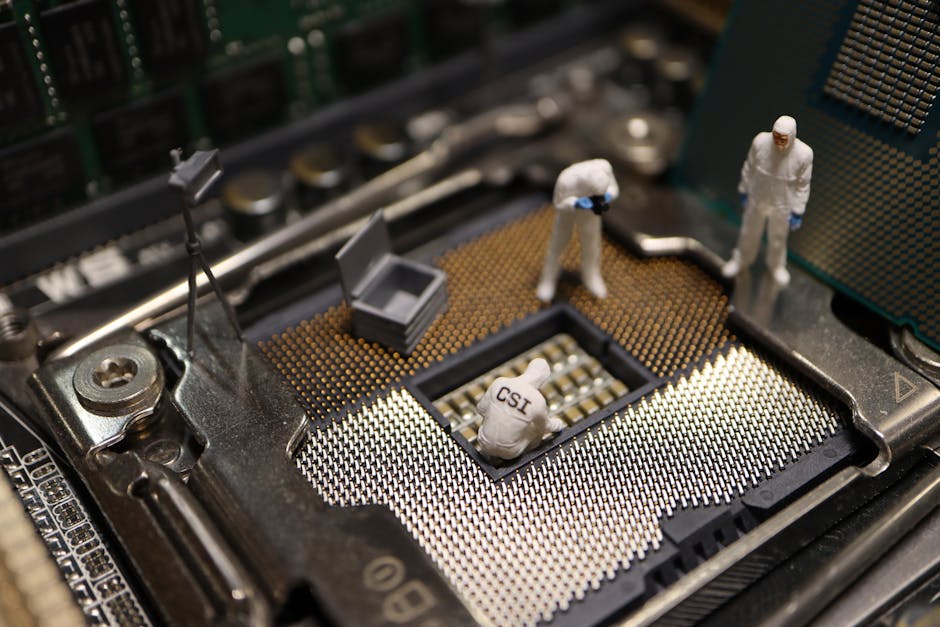IIT JEE batteries questions demand a strong grasp of electrical circuits. This post will break down the complexities of these problems, equipping you with the knowledge to solve them. We will look at the core principles of cells, internal resistance, and circuit analysis. Our goal is to prepare you for success in your IIT JEE exams.
Table of Contents
- Understanding the Basics of Cells and Internal Resistance
- Electromotive Force (EMF) and Terminal Voltage
- Internal Resistance and Its Impact on Circuit Behavior
- Analyzing Parallel Cell Configurations for IIT JEE
- Calculating Equivalent EMF and Internal Resistance in Parallel
- Current Distribution in Parallel Cell Networks
- Key Takeaways for Mastering Battery Problems
Read More
Let’s get into the fascinating world of electrical circuits and batteries, particularly focusing on numerical problems crucial for IIT JEE preparation. This exploration will cover the intricacies of cells, internal resistance, and their combined effects in circuits. We’ll dissect several problems, providing detailed, step-by-step solutions, ensuring a solid grasp of the underlying principles and their applications. The objective is to equip you with the skills to confidently tackle any iit jee batteries related problem.
Understanding the Basics of Cells and Internal Resistance
To master iit jee batteries problems, one must first grasp the fundamental concepts of cells and internal resistance. A cell, the basic unit of a battery, generates electromotive force (EMF), which drives the current in a circuit. However, cells are not ideal; they possess internal resistance, a resistance to the flow of current within the cell itself. This internal resistance causes a voltage drop within the cell when current flows, reducing the terminal voltage available to the external circuit. This section provides a clear understanding of these concepts.
Electromotive Force (EMF) and Terminal Voltage
The EMF of a cell, often denoted by ##E##, is the total voltage the cell can provide. It is the potential difference across the terminals of the cell when no current is drawn. The terminal voltage, ##V##, is the actual voltage available to the external circuit when current, ##I##, is flowing. The relationship between EMF, terminal voltage, internal resistance (##r##), and current is given by: ##V = E – Ir##. This equation highlights that the terminal voltage is always less than the EMF due to the voltage drop across the internal resistance. The EMF is the theoretical maximum voltage, while the terminal voltage is the voltage you can measure with a voltmeter connected across the cell terminals under load.
Consider a cell with an EMF of 12V and an internal resistance of 0.5 ohms. If a current of 2A is drawn from the cell, the terminal voltage would be ##12 – (2 \times 0.5) = 11V##. This demonstrates that the voltage available to the external circuit is reduced due to the internal resistance. The internal resistance effectively acts as a resistor inside the cell, consuming some of the generated voltage. The higher the internal resistance and the current drawn, the greater the voltage drop, and the lower the terminal voltage.
Internal Resistance and Its Impact on Circuit Behavior
The internal resistance of a cell, ##r##, is a crucial parameter affecting the performance of the cell in a circuit. It arises from the resistance to the flow of ions within the electrolyte of the cell. Factors influencing internal resistance include the cell’s design, the electrolyte’s properties, and the cell’s temperature. A lower internal resistance is desirable as it minimizes the voltage drop within the cell, allowing more voltage to be delivered to the external circuit. This is critical for applications requiring stable and efficient power delivery.
Internal resistance affects circuit behavior significantly. For instance, when cells are connected in series, their internal resistances add up, increasing the overall internal resistance of the battery. This can lead to a significant voltage drop, especially at higher currents. Conversely, when cells are connected in parallel, the effective internal resistance decreases, which can be advantageous in applications requiring high current output. Understanding the impact of internal resistance is essential for designing efficient and reliable electrical circuits. The ability to calculate and account for internal resistance is vital for solving iit jee batteries problems effectively.
Analyzing Parallel Cell Configurations for IIT JEE
Now, let’s focus on a specific configuration: cells connected in parallel. Understanding this arrangement is critical for solving many iit jee batteries problems. In a parallel configuration, the positive terminals of the cells are connected together, and the negative terminals are also connected. This arrangement is often used to increase the current capacity of a battery while maintaining the same voltage. The key to solving problems related to parallel cells lies in understanding how EMF, internal resistance, and current behave in this setup. This section provides the necessary tools and insights.
Calculating Equivalent EMF and Internal Resistance in Parallel
When cells are connected in parallel, the equivalent EMF of the combination is the same as the EMF of a single cell (assuming all cells have the same EMF). However, the internal resistance changes, and the equivalent internal resistance is calculated using:
###\dfrac{1}{r_{eq}} = \dfrac{1}{r_1} + \dfrac{1}{r_2} + \dots + \dfrac{1}{r_n}###
This formula is analogous to the rule for finding the equivalent resistance of resistors in parallel. The total current supplied by the parallel combination is the sum of the currents from each cell.
Example
Two cells, each with EMF = 1.5 V, have internal resistances ##r_1 = 0.5 \,\Omega## and ##r_2 = 1.0 \,\Omega##, connected in parallel.
- Equivalent EMF: ###E_{eq} = 1.5 \, V###
- Equivalent internal resistance: ###\dfrac{1}{r_{eq}} = \dfrac{1}{0.5} + \dfrac{1}{1.0} = 2 + 1 = 3### ###r_{eq} = \dfrac{1}{3} \,\Omega \approx 0.33 \,\Omega###
Thus, the effective cell behaves like a 1.5 V source with internal resistance of about 0.33 Ω. This configuration allows the setup to supply a larger current compared to either cell alone, since the lower equivalent internal resistance reduces energy loss inside the cells.
Accurately calculating the equivalent EMF and internal resistance is crucial in solving IIT JEE problems on parallel cell configurations, especially when analyzing the total current delivered to an external load.
Current Distribution in Parallel Cell Networks
In a parallel cell network, the current distribution depends on the internal resistances of the cells. Cells with lower internal resistance contribute more current, as current prefers the path of least resistance.
The current from each cell is given by:
###I_i = \dfrac{E_i – V}{r_i}###
where: – ##E_i## = EMF of the cell – ##V## = terminal voltage of the parallel combination – ##r_i## = internal resistance of the cell
The terminal voltage ##V## is determined by the external resistance ##R## and the total current delivered to it.
Two-Cell Parallel Example
Consider two cells connected in parallel with EMFs ##E_1##, ##E_2## and internal resistances ##r_1##, ##r_2##, connected to an external resistance ##R##.
- The current from the first cell: ###I_1 = \dfrac{E_1 – V}{r_1}###
- The current from the second cell: ###I_2 = \dfrac{E_2 – V}{r_2}###
The total current is the sum:
###I = I_1 + I_2 = \dfrac{V}{R}###
Thus, the balance between EMFs, internal resistances, and the external resistance governs how current divides between the cells. This principle is essential for analyzing parallel battery networks in IIT JEE problems, as it shows why cells with smaller internal resistance supply a greater share of the total current.
Key Takeaways for Mastering Battery Problems
Mastering iit jee batteries problems requires a strong foundation in the concepts of EMF, internal resistance, and circuit analysis. By understanding how these elements interact in series and parallel configurations, you can confidently solve a wide range of problems. Remember that practice is key, so work through as many problems as possible to solidify your understanding. The formulas and concepts we’ve covered provide a solid basis for tackling more complex circuit problems, which are frequently encountered in IIT JEE examinations.
Key Formulas for Cells and Batteries
1. Terminal Voltage:
###V = E – I r###
Where: – ##V## = terminal voltage across the cell – ##E## = EMF of the cell – ##I## = current drawn from the cell – ##r## = internal resistance of the cell
2. Equivalent Internal Resistance (Parallel):
###\dfrac{1}{r_{eq}} = \dfrac{1}{r_1} + \dfrac{1}{r_2} + \dots + \dfrac{1}{r_n}###
This formula is used when multiple cells with different internal resistances are connected in parallel, analogous to parallel resistor combinations.
3. Current from a Cell (in Parallel Combination):
###I_i = \dfrac{E_i – V}{r_i}###
Where: – ##I_i## = current supplied by the i-th cell – ##E_i## = EMF of the i-th cell – ##V## = common terminal voltage across the parallel combination – ##r_i## = internal resistance of the i-th cell
These three relations form the foundation for analyzing IIT JEE-level battery and cell problems, including terminal voltage calculations, equivalent internal resistance, and current distribution in parallel networks.
Tips for Success
Strategies for Solving Circuit Problems
- Draw Circuit Diagrams: Always sketch a clear and labeled diagram of the circuit. This helps in visualizing the problem and identifying series/parallel combinations.
- Identify Knowns and Unknowns: List all the given values (resistances, EMFs, currents, etc.) and clearly state what needs to be calculated.
- Apply Kirchhoff’s Laws: Use Kirchhoff’s Current Law (KCL) at junctions and Kirchhoff’s Voltage Law (KVL) around loops to analyze complex circuits.
- Practice Regularly: Solve different types of problems to gain familiarity with patterns and shortcuts.
- Check Your Answers: Always recheck units, verify results with Ohm’s law, and ensure the answers are physically consistent.
Similar Problems with Solutions
Problem 1: Series Combination
Two cells with EMFs of 2V and 3V and internal resistances of 0.2Ω and 0.3Ω are connected in series.
Solution: Total EMF = 2V + 3V = 5V Total internal resistance = 0.2Ω + 0.3Ω = 0.5Ω
Problem 2: Parallel Combination
Two cells, each with an EMF of 1.5V and an internal resistance of 0.1Ω, are connected in parallel.
Solution: Equivalent EMF = 1.5V (same as each cell) Equivalent internal resistance: ###\dfrac{1}{r_{eq}} = \dfrac{1}{0.1} + \dfrac{1}{0.1} = 20 \;\Rightarrow\; r_{eq} = 0.05Ω###
Problem 3: Current Calculation
A cell with EMF = 1.5V and internal resistance = 0.2Ω is connected to an external resistor of 1.3Ω.
Total resistance = 1.3 + 0.2 = 1.5Ω Current: ###I = \dfrac{E}{R+r} = \dfrac{1.5}{1.5} = 1A###
Answer: 1A
Problem 4: Terminal Voltage
A cell has EMF = 1.5V and internal resistance = 0.1Ω. If the current drawn is 0.5A:
Terminal voltage: ###V = E – Ir = 1.5 – (0.5 \times 0.1) = 1.45V###
Answer: 1.45V
Problem 5: Parallel Cells with External Load
Two cells with EMFs of 2V and 1.8V, internal resistances 0.1Ω and 0.2Ω, are connected in parallel across a 1Ω resistor.
After solving with current division and terminal voltage analysis, the total current through the external resistor is approximately:
Answer: 3.5A
These examples demonstrate step-by-step methods for analyzing series, parallel, and mixed cell-resistor problems. Mastering these will significantly improve your problem-solving ability in IIT JEE circuit analysis.
| Concept | Description | Formula |
|---|---|---|
| Electromotive Force (EMF) | The total voltage a cell can provide when no current is drawn. | ##E## |
| Terminal Voltage | The actual voltage available to the external circuit when current is flowing. | ##V = E – Ir## |
| Internal Resistance | The resistance within a cell to the flow of current. | ##r## |
| Equivalent Internal Resistance (Parallel) | The combined internal resistance of cells connected in parallel. | ### rac{1}{r_{eq}} = rac{1}{r_1} + rac{1}{r_2} + … + rac{1}{r_n}### |
| Current from a Cell (Parallel) | The current supplied by an individual cell in a parallel configuration. | ###I_i = rac{E_i – V}{r_i}### |
We also Published
RESOURCES
- Batteries – Study Material For IIT JEE askIITians
- Md Arman Ansari – Graduate Research Assistant at West Virginia …
- Fuel Cell – Study Material for IIT JEE | askIITians
- The energy obtained from electric cells and batteries as a resu-Turito
- Capacitors – YouTube
- Three batteries are connected as shown in the figure. Then the total
- Exploring Battery Configurations: Series and Parallel Explained
- Two batteries of different emfs and different internal resistances are
- Ujjwal Chopra – xEV/Battery Modelling || System Simulation || Digital …
- IIT-JEE 2011 Paper 2 Offline | Current Electricity Question 22 …







0 Comments